Racing Pigeons: Three Things to Look For When Selecting Breeders
Chances are better that you will produce a winning pigeon if you are breeding from birds that are winners. In racing pigeons, we are selecting for so many factors many of which can not be seen or detected when holding a pigeon in our hand, or viewing them on a perch. Which genetics come variation. Variation in everything, from muscle quality, organ quality, the ability to orientate and find home, inherited behaviors such as a fierce determination to get home. We as fanciers select for physical characteristics we can see. The basket and the races select for the qualities that we can’t see. Using this logic, we must assume if we want a leg up on selecting for breeding quality, we have to also look at racing performance.
2. Breeding Performance
Which is worth more, one pigeon out of ten that is a “sport” or a champion or ten that are above average? This is a question we must ask ourselves. When evaluating our birds breeding performance we must set a standard. I think it’s a wrong standard to select on merely the number of birds bred versus how many of them remain on the team. We must set a higher bar and look for those that produce diploma winners, even if a good number of their youngsters get lost in training. That’s selection working for us. The basket training is selecting the youngsters that did not inherit the right combination of genes, while the diploma or point winners, though few have inherited the right combination. If you do not have an abundance of diploma winners, than look at how many birds are first or first of three to the loft. Start there. Set a standard and maintain it. If you improve enough to set the bar higher, than you are doing something right.
Don’t select from only one mating. Before you give up on a breeder, mate it to at least three different mates. Often times, you are looking for a good “click”. Sometimes, two birds, genetically are not a good match and are passing on genes that do not compliment each other or are passing on similar deleterious genes. After you have mated them to several different mates and they are not producing to your standard, remove them from your program.
3. Physical Characteristics
Look for birds that meet your preferred physical characteristics. A good breeder will be balanced regardless of size. They will have good feather quality. A breeder must be healthy. Breeding stresses a pigeon and a pigeon under stress will not breed to his/her potential. The eyes should be clear and the wattle snowy white. Some breeders are prisoners or have been prisoners for some time. Muscle tone and physical fitness is not maintained in a prisoner pigeon that is not out flying nearly daily. Also today when there are so many birds of prey attacking our homing pigeons, only a fool would let their best breeders loft fly and take the chance that a Cooper Hawk or Goshawk would take them down. As angry as you might be, the predators are protected and if you send the bill to Uncle Sam, he’s not going to compensate you for your loss. If you are looking on the race team, and you are selective with the race team, they should already possess the physical traits you are looking for.
I prefer a bird with longer wings, I like the tips of the tenth flight feathers to reach within 1/2 inch of the tail bar. I want a roomy throat. I don’t like birds with long necks. I prefer a shorter roomier neck. I want the muscles and air sac to be supple. I like a broad rump area and a strong back. I like a pigeon to feel like a piece of pie when I hold them. A bird must be balanced, both when viewed standing on a perch and when held in the hand. I like a bird that is well feathered over the keel. Sometimes I get birds that are not thick feathered in that area and none of them have ever flown to standard. I like the lower mantle of the tail to be thick. I like like wide and longer secondary feathers on the wing. Just like the tail, I like the lower mantle on the wings to be thick. I like the ear holes on my birds to be well feathered. Any birds that do not have well feathered ear holes have never proven to be of value. I am not a subscriber to eye sign at this point in my hobby so I make no selection based on eye sign. I like the eyes to be clear, but clarity of the eye is a sign of health.
Racing Pigeons: Three Things to Look For When Selecting Breeders by Domanski Family Lofts

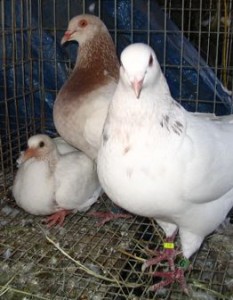
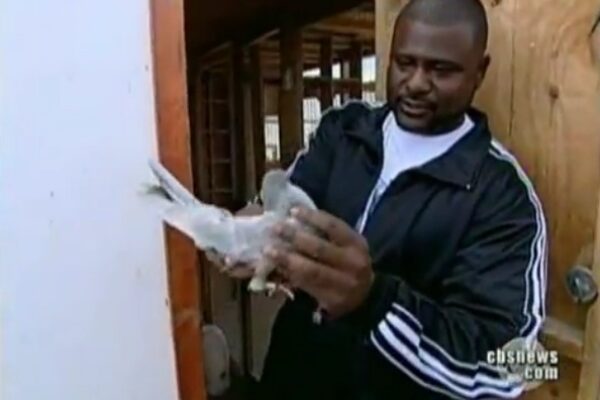

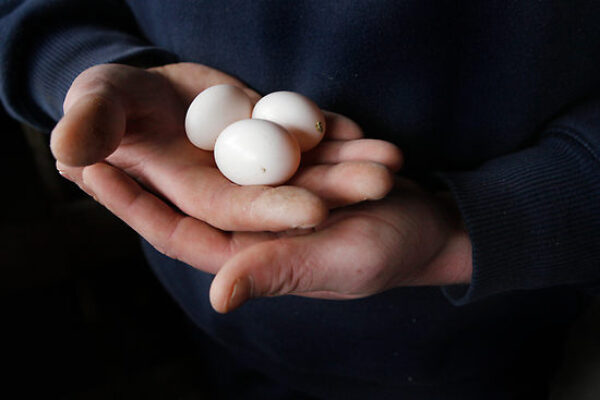
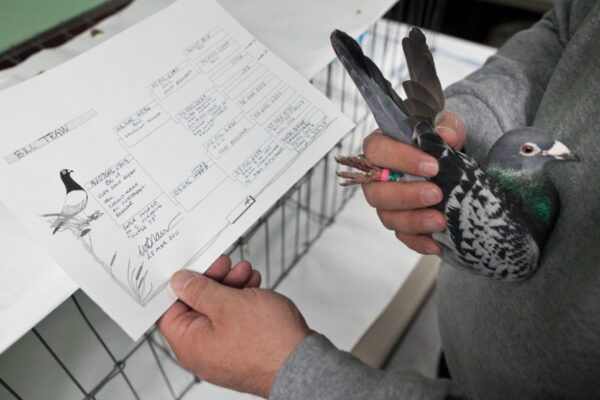
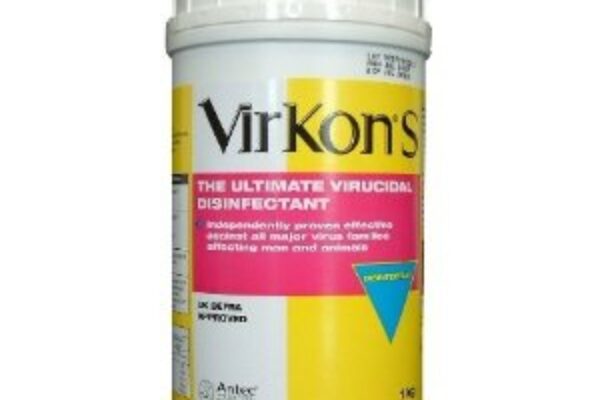
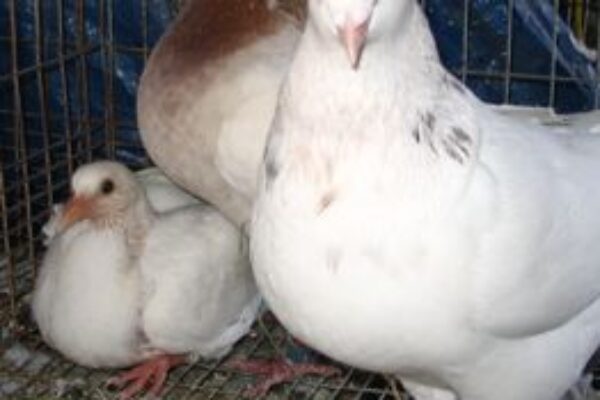


Hi guys, I’m confused about the word (NITCH) when looking for a breeding pair. I have been breeding pigeons for over 50 years and have never heard this word used before. I think the word that you’re looking for is (CLICK). A click pair is one that complement each other. No only in race preference, but in body size and structures.
Hi, Bob. I agree with you. Though the original text did have the word “nitch”, i have now replaced it with “click”. Thanks for pointing that out!
thanks
Thank you for sharing your thoughts. I am sure many if not most would agree with you. I have taken some very unscientific polls over the years on selection of breeding stock, and the guys all say they use the basket as their chief selection tool, but often list as you did, any number of “likes” and “dislikes” about anything and everything. Your list was a good sampling of some of the many things fanciers report they “like”, and I am sure if a list was actually compiled, there could be hundreds if not thousands.
Hard to say when a particular “like” or “dislike” disqualify’s a bird as a breeding candidate, even when the race basket might just say, “This is your better racer” . Somewhere between what people say they do, and what they may actually do, a lot of birds are produced. Vast majority of them, like their owners, are just going to be plain old average. So either this generally accepted theory is incorrect, or there is a major misapplication of this theory in practice.
In my mind, this begs the question, if the race basket is the supreme selection tool, then why do we even bother with all the other “likes” or “dislikes” ? If one wants to breed pretty birds for the show ring, then of course what a judge will like would be important. That perfect tail and wing, back, eye, neck, feet, etc. If the goal is to produce racing pigeons, then why not just let the race basket do it’s job, if the theory is correct, then the basket won’t need our like lists in order to produce winners. At this point, I am not convinced that any of our “Like” lists are even relative outside the show ring at best, and a possible detriment to breeding more winners. But, it is just a theory.
I look at everything in percentages. The physical make-up of a bird increases your chances of producing a special bird. After all I do in judging the physical aspects of a bird, it’s the basket that separates the winners from the average bird to me. So I think the Physical selection is important in the fact that it helps increase your percentage of producing a great bird. Kind of like a football player-it helps to be 6′ 6 330 pds if your on the line. If you run the marathon 6′ and 160pounds is good.
hi warren. at last a man with a brain has spoken .I agree with .you . human beings use visual stimuli as a huge part of our judgement on anything , a lot predetermined by preconceptions . likes and dislikes are only folly for a pigeon man who seeks the truth .but if the man has seen a winner via picture or real as well as handled . your brain without you knowing has logged key factors . your already bias in one form or another .ie size colour fam or even sex . my first winner was a blue white ft cock , that’s my fav bird the minute I see a yb even though I know better . programming .!have you ever noticed a couple walking hand in hand totally in love who look like brother and sister ? these people are very vain . they love themselves .what has this to doo with pigeons ? everything !yours in sport algi .
I agree with your comments you will have to set a standard of performance for the novice starting with your loft performances then graduate to club, fed and combined level, by then you should have a good team of breeding birds.
Very good advise! It all must be in balance when selecting breeding pairs,good healthy,shiny eyes,feathers soft and even some things in the throat,tells you a story about the pigeons health. I prefere a good wing with no drop in the secondary flights when opening the birds wing and the upper bone short and close to the body with good muscle. Also prefere a rich eye with a lot of colour and tiny little stripes in the eye. I dont like a bulls eye in pigeons and never use them as breeders. The tail must also be like its only one feather (narrow).
hi leon ., just browsing thru pigeon patter. im from Scotland . just thot id ad a wee point of view you may not have thought of, I love people talking of balance especially , the tail one feather wide . but don’t know why . firstly its not a food you like the taste of or a colour you prefer its a fact .the narrower the tail the faster the bird (less drag)but in the hand this is meaningless , watch the same bird fly over head then judge its tail width against the rest of your best , the same applys to a guy telling you it has great balance in the hand , nonsense. the only balance a man can derive in the hand is his preference , pigeons win all shapes and sizes , what they lack in one department they compensate elsewhere or they would not be a winner .also with the bull eye .the bull eye is a sun shield pigment as the bird has albino recesive genes , the bird carries pied . point the birds eye directly to the sun then view from behind its head . don’t judge a pigeon because of your ignorance. ps I liked you views I hope mine helped a little yours in sport algi .